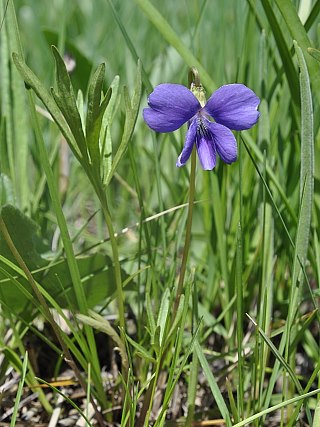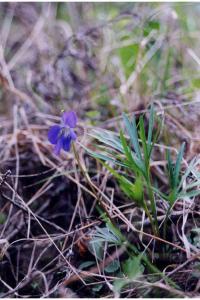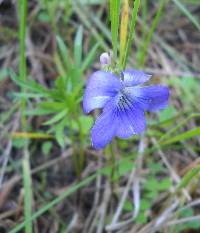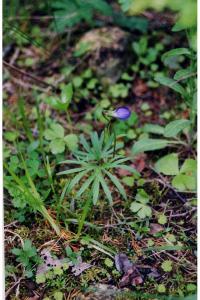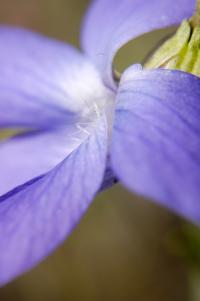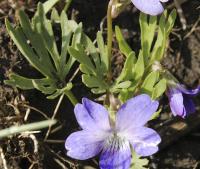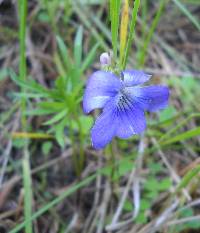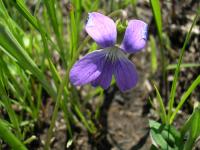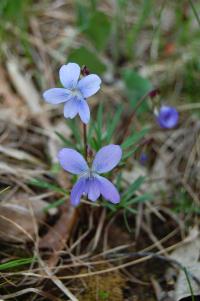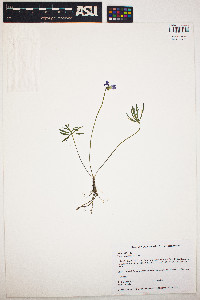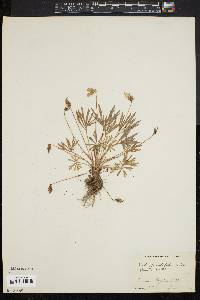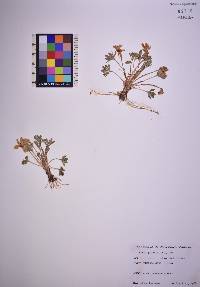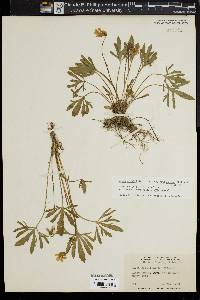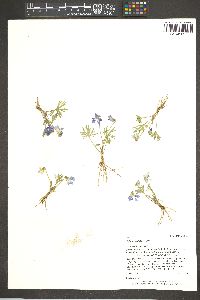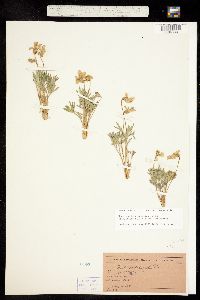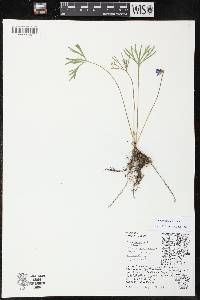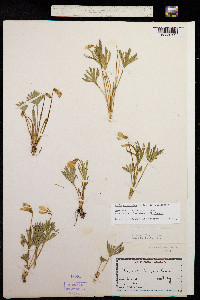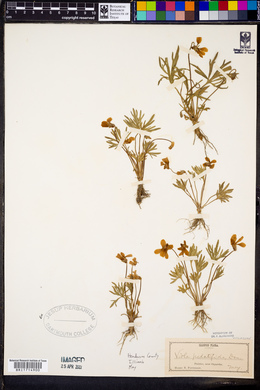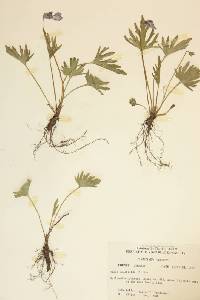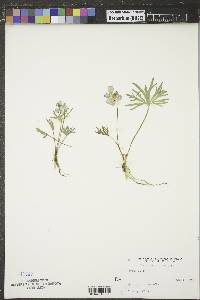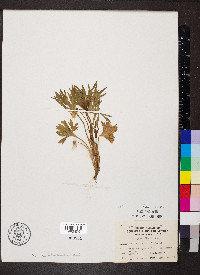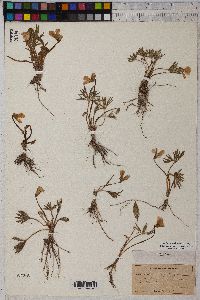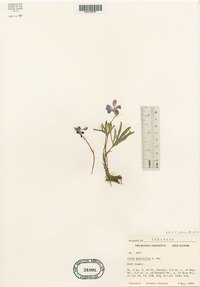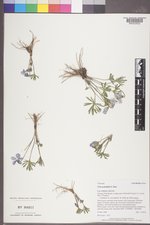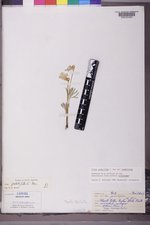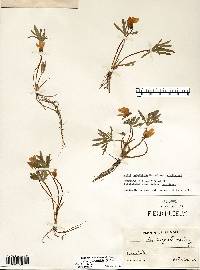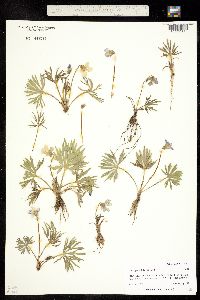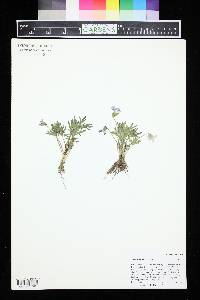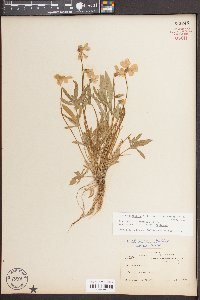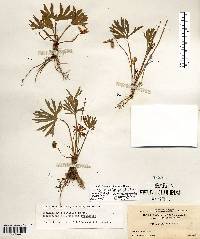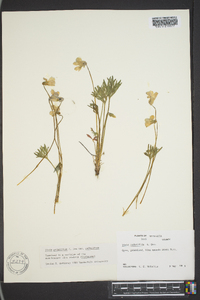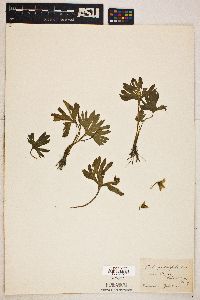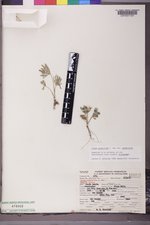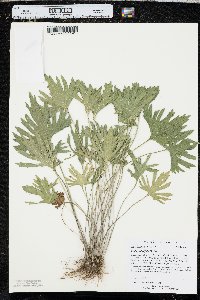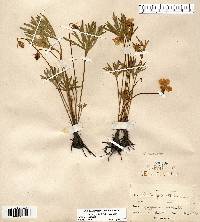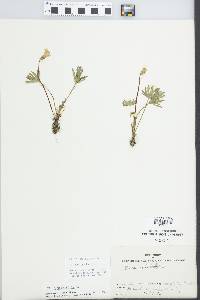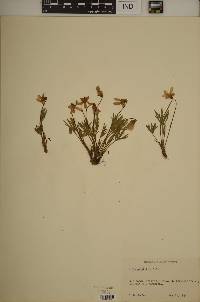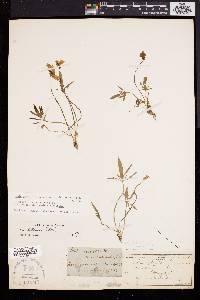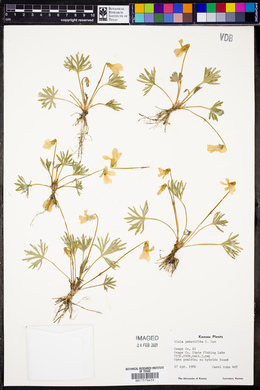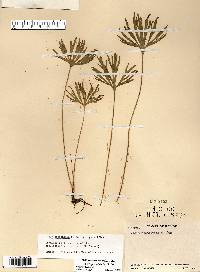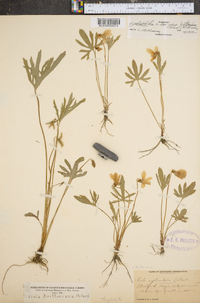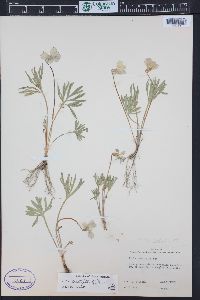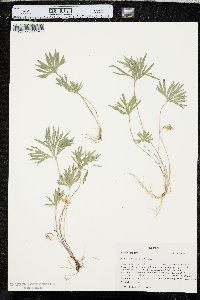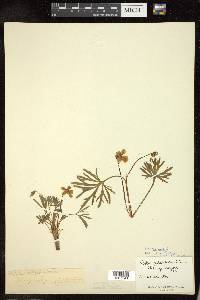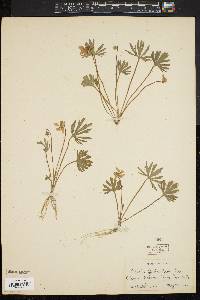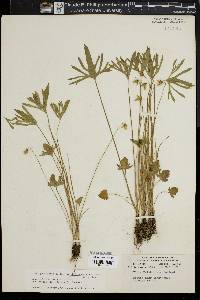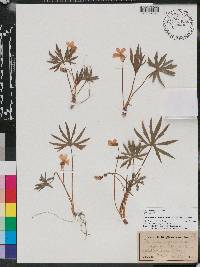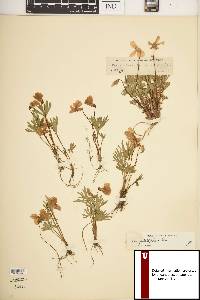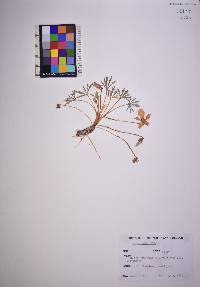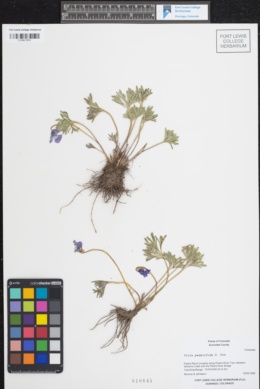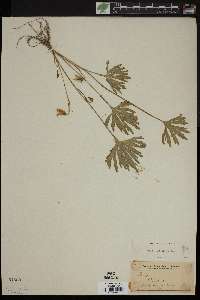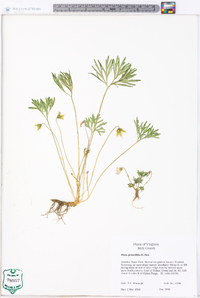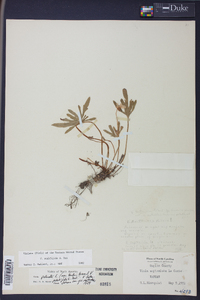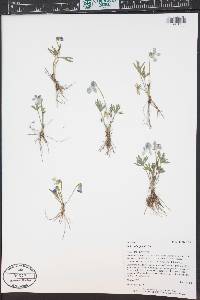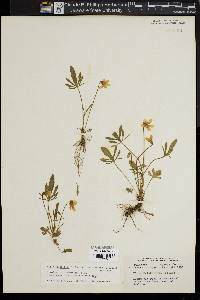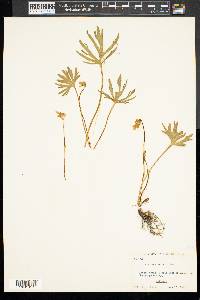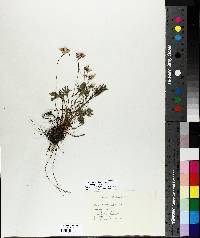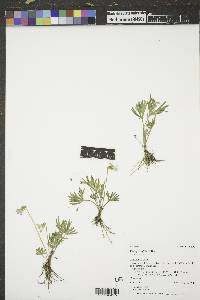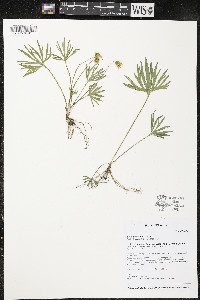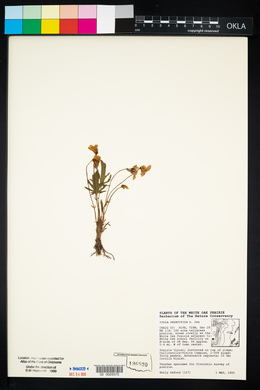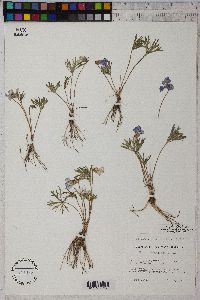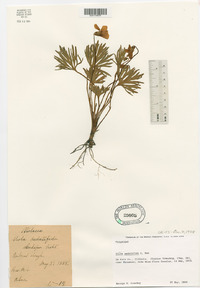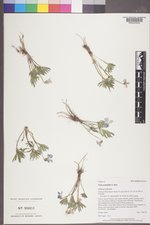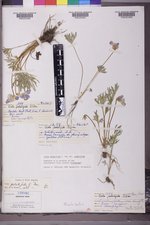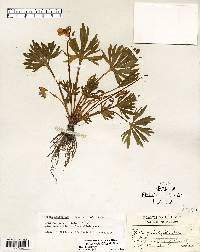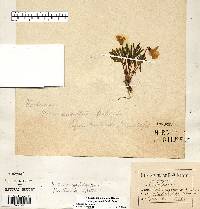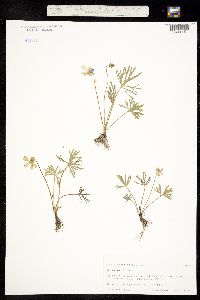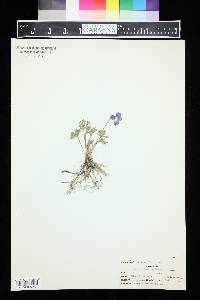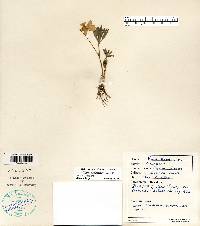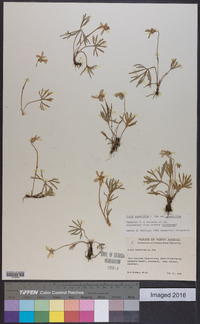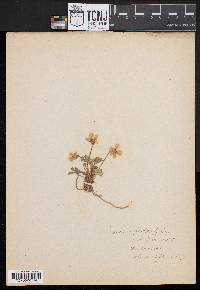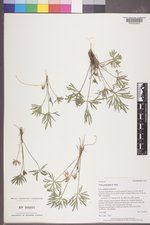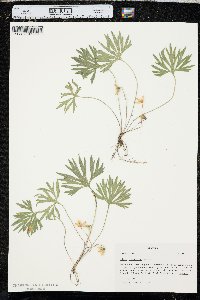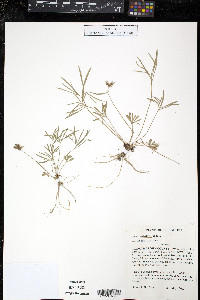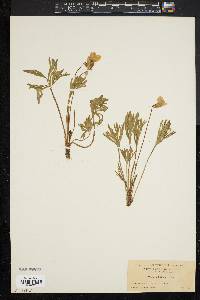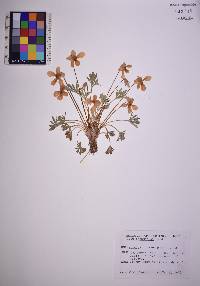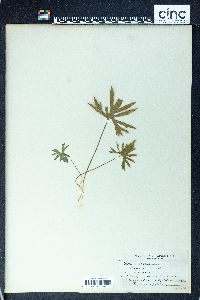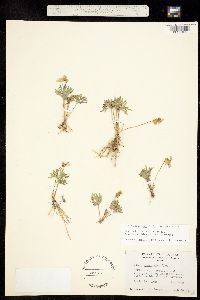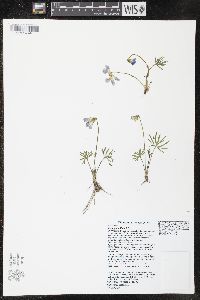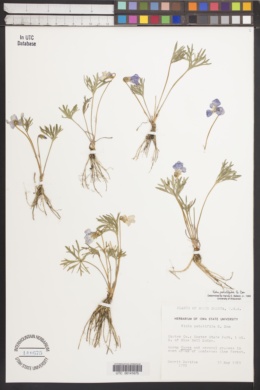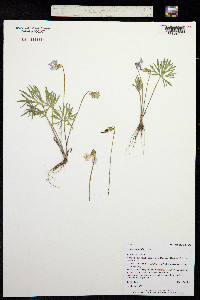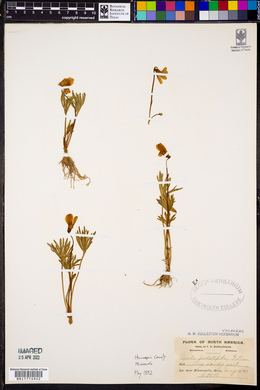Viola pedatifida
|
|
|
|
Family: Violaceae
Crow-Foot Violet, more...prairie violet
[Viola delphinifolia Nutt., moreViola palmata var. pedatifida (G. Don) Cronq.] |
Non-technical Description: Prairie violet is a stemless perennial herb without rhizomes or stolons. Leaf blades are palmately divided into 3 or more segments, with the main segments further subdivided nearly to the base. Stipules are lance-shaped. Flowering stalks are equal to longer than the leaves and glabrous. Sepals are lance to ovate-lanceolate. Petals are violet to reddish violet, 10-18 mm long, and strongly veined. The three lower petals are densely bearded. Cleistogamous (non-opening) flowers are borne on short peduncles among the basal leaves. Fruits are glabrous, yellow-green capsules 8-12 mm long. Flowering and fruiting: April-June. (Great Plains Flora Association 1986, Larson & Johnson 1999). Similar Species: Bird's-foot violet (Viola pedata) has beardless petals. Habitat: Found in plains and open woodlands (Great Plains Flora Association 1986). References:Great Plains Flora Association. 1986. Flora of the Great Plains. Univ. Kansas Press, Lawrence, KS. Larson, G.E. and J.R. Johnson. 1999. Plants of the Black Hills and Bear Lodge Mountains. South Dakota State University College of Agriculture and Biological Sciences & South Dakota Agricultural Experiment Station, Brookings, SD. Author: Walter Fertig, Moenave Botanical Consulting, Kanab, UT. April 2017 Plant: perennial herb; 4-30 cm tall. STEMS none; plants arising from a short, vertical rhizome, glabrous to sparsely pilose Leaves: basal, erect, glabrous to short hirsute, the margins ciliate; palmately divided into 5-9 linear, spatulate, obovate, or falcate segments, each cleft or parted toward apex; apices obtuse, acute to mucro tipped; bases truncate, reniform or cordate INFLORESCENCE: scapose; pedicels to 18 cm long Flowers: petals light to dark blue-violet on face, the lower 3 bearded Fruit: FRUITS glabrous, ovoid to oblong; SEEDS ca. 15-20, usually ovoid, with a prominent caruncle Misc: Coniferous forests; normally of prairie habitats, rarely in open woods.; 2400 m (7800 ft); May-Jun REFERENCES: Little, R. John. Violaceae. 2001. J. Ariz. - Nev. Acad. Sci. Volume 33(1). Perennial herb 6 - 20 cm tall Stem: absent aboveground, leaves and flowers arising independently and directly from an ascending rootstock of thick (much greater than 3 mm diameter) rhizomes but lacking runners (stolons). Leaves: basal, erect, long-stalked, firm, short-hairy, 3 - 5 cm wide, and deeply divided (nearly to base) into slender linear segments. The leaf stalks are covered with short hairs, and the green stipules are less than 1.5 cm long and fully separate from the leaf stalk. Flowers: long-stalked (mostly taller than leaves), deep violet, 1 - 2 cm long, bilaterally symmetric with two upper petals, two lateral petals, and lower petal with base modified into a rounded nectar spur. In the summer, producing very fertile flowers that do not open (cleistogamous). Sepals: five, green, about half the length of petals, lance-shaped with ear-like appendages (auricles) at the base. Petals: five, separate, all differently shaped, but all forward-facing. The two lateral petals and lowest petal have a beard of hairs near the base, and the lowest petal is also prolonged at its base into a short, rounded spur or sac. Stamens: five, separate, but very tightly arranged so anthers touch as they surround ovary. The filaments are very short (anthers not exposed), and the lower two stamens have spur-like nectaries on their backs that extend into the spur or sac of the lower petal. Pistil: with a single-chambered, superior ovary; and a single style that expands into a short, scoop-shaped stigma. Fruit: a many-seeded, green, hairless, ellipsoid capsule on slender, ascending or erect stalks. The capsule opens lengthwise from its top to disperse the seeds which have a large amount of oily endosperm, and often an appendage (aril). Similar species: Viola pedatifida is often confused with V. pedata, but that species has flaring petals so the flower looks flat from the front making the orange anthers easily visible, none of the petals are bearded, and the rhizome is strictly vertical (erect) and very stout. Also very similar are V. x palmata and V. x subsinuata, but both hybrids have leaves that are merely coarsely lobed only about halfway to the blade base, the hairs on the leaf stalks and leaves are much longer, and the capsules are purple-flecked and on short, prostrate stalks. Flowering: April to early June Habitat and ecology: Not common, very localized to mesic black soil prairies and savannas. Occurence in the Chicago region: native Notes: Some authorities have suggested placing this species in synonymy with V. x subsinuata or V. x palmata, but we follow Ballard (1994) who is among the current leading experts of the genus in North America. This species is listed as Threatened in Indiana and Michigan, primarily because its prairie habitat is so rare and vulnerable. Etymology: Viola is the classical name for the genus. Pedatifida means "dissected like a foot", often meaning like a bird's foot, which is deeply lobed as are these leaves. Author: The Field Museum From Flora of Indiana (1940) by Charles C. Deam In dry prairies and open woodland. Very rare. …… Indiana Coefficient of Conservatism: C = 9 Wetland Indicator Status: FACU |
|
|
|

